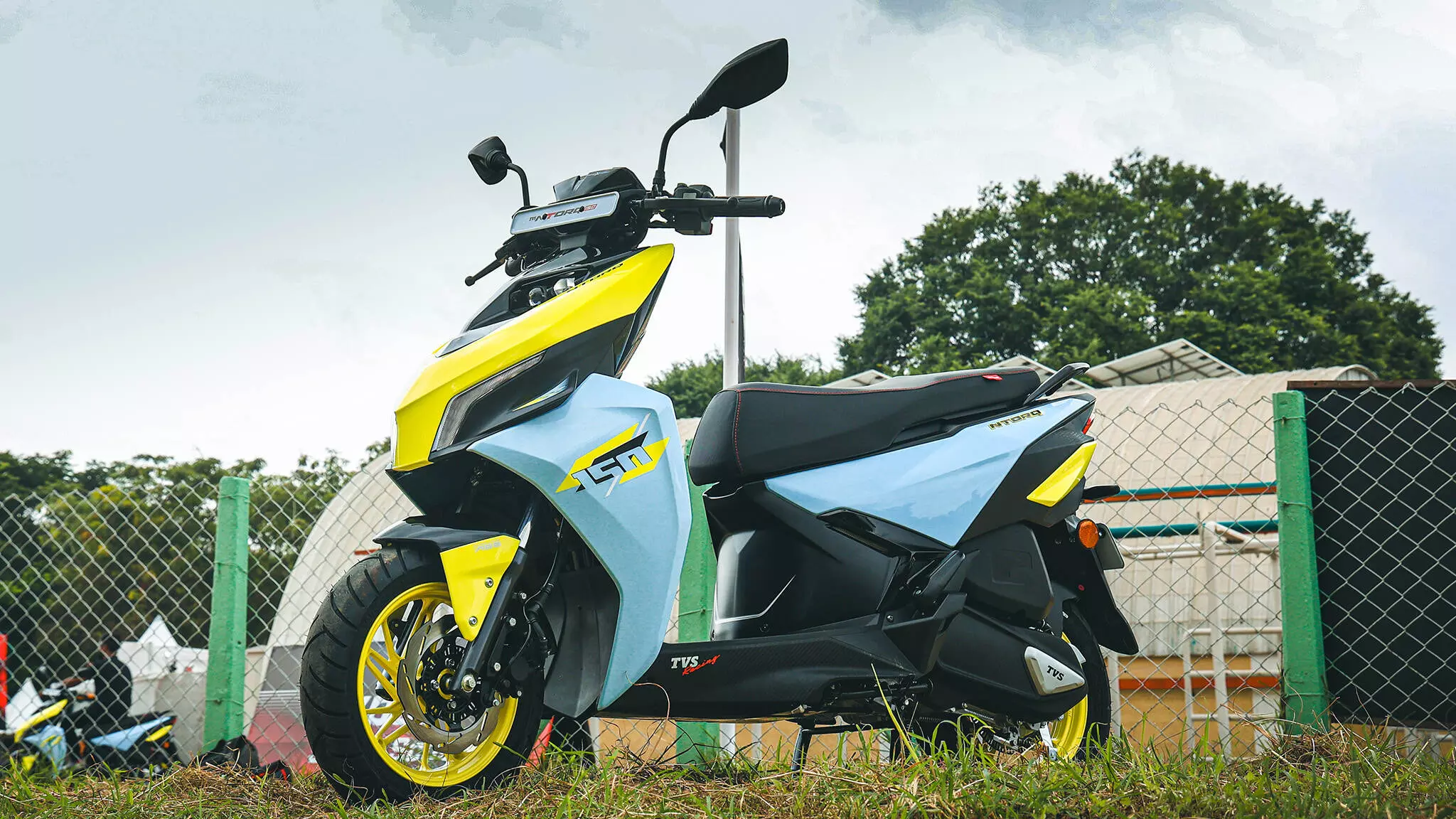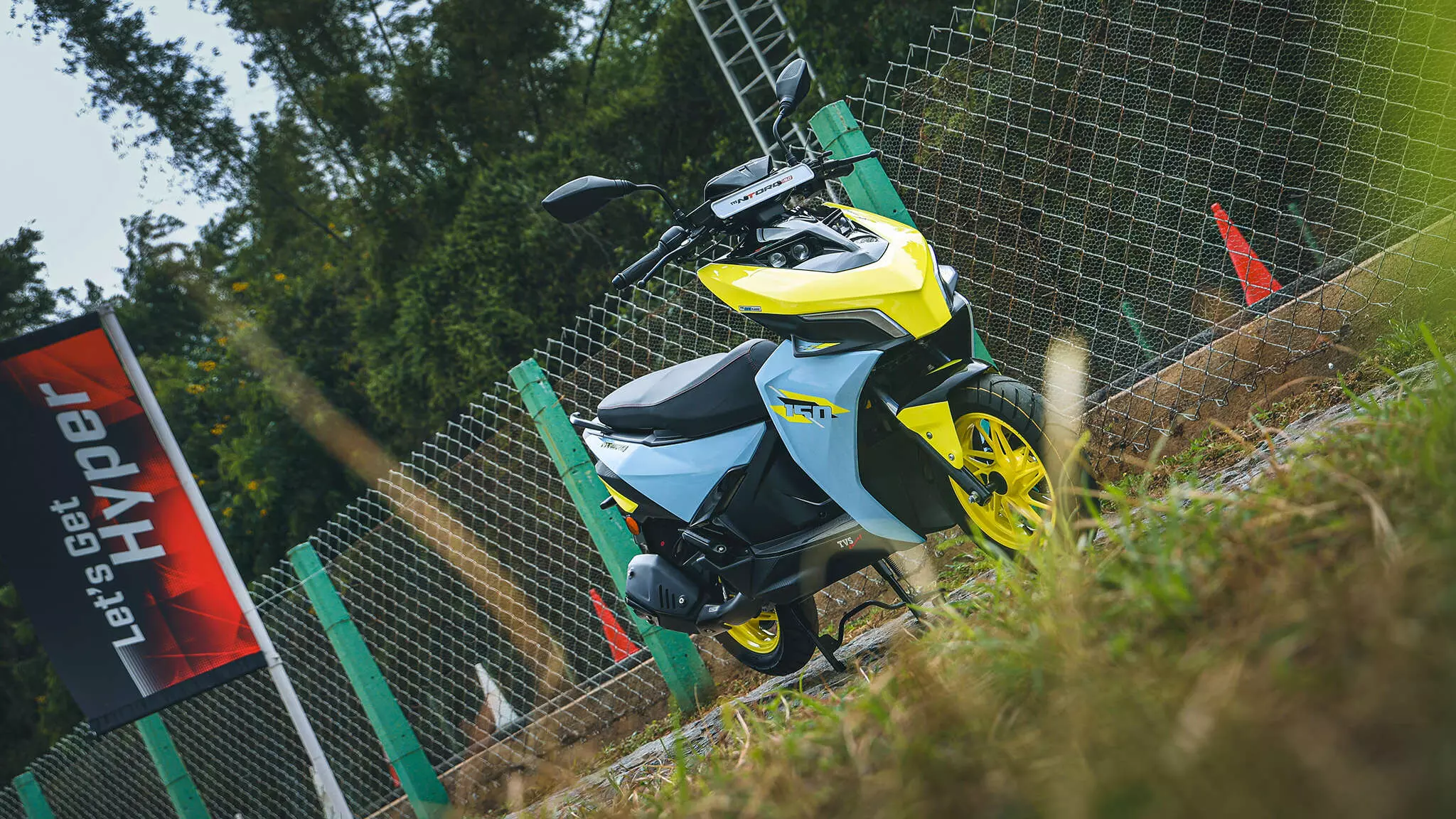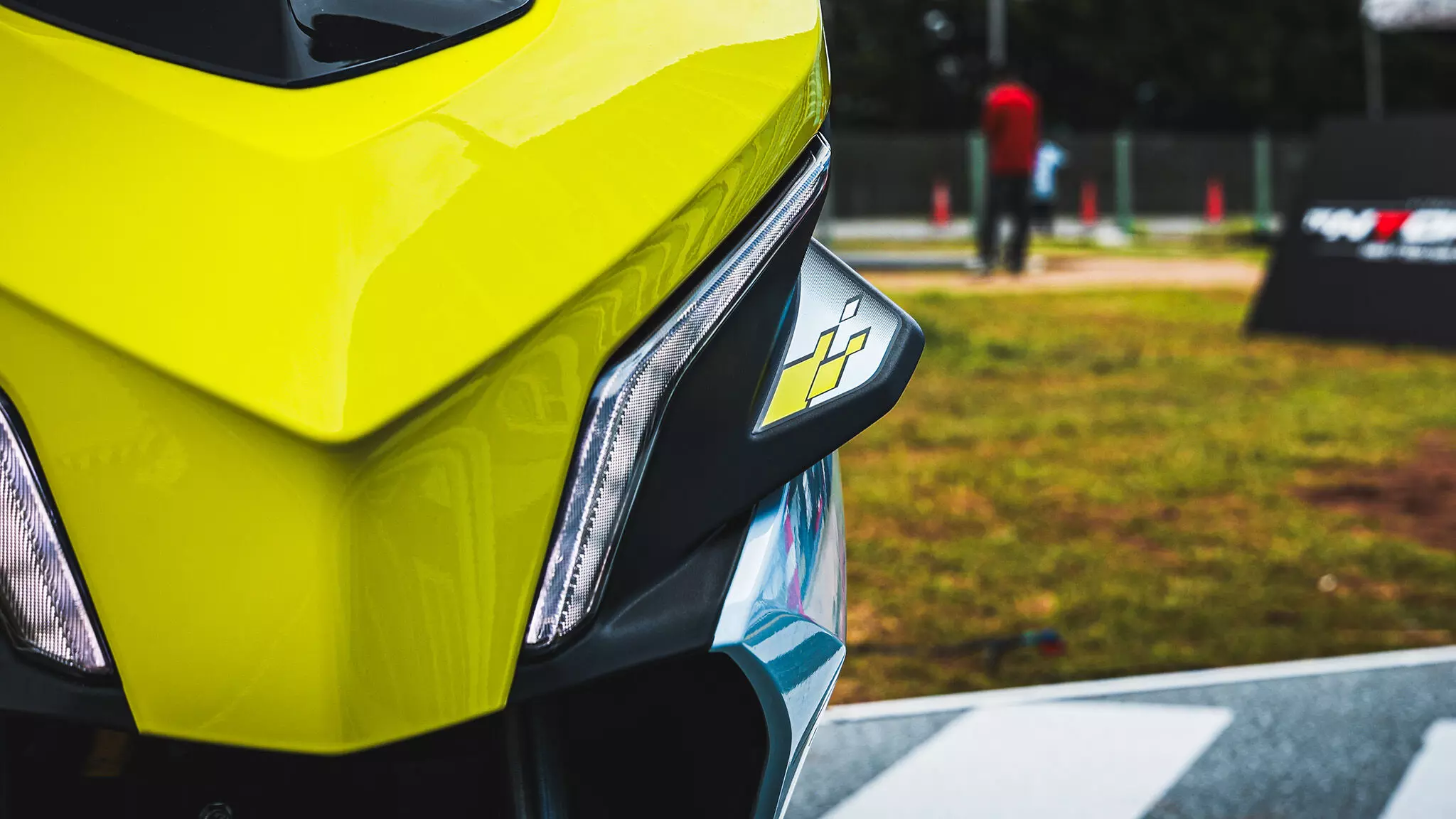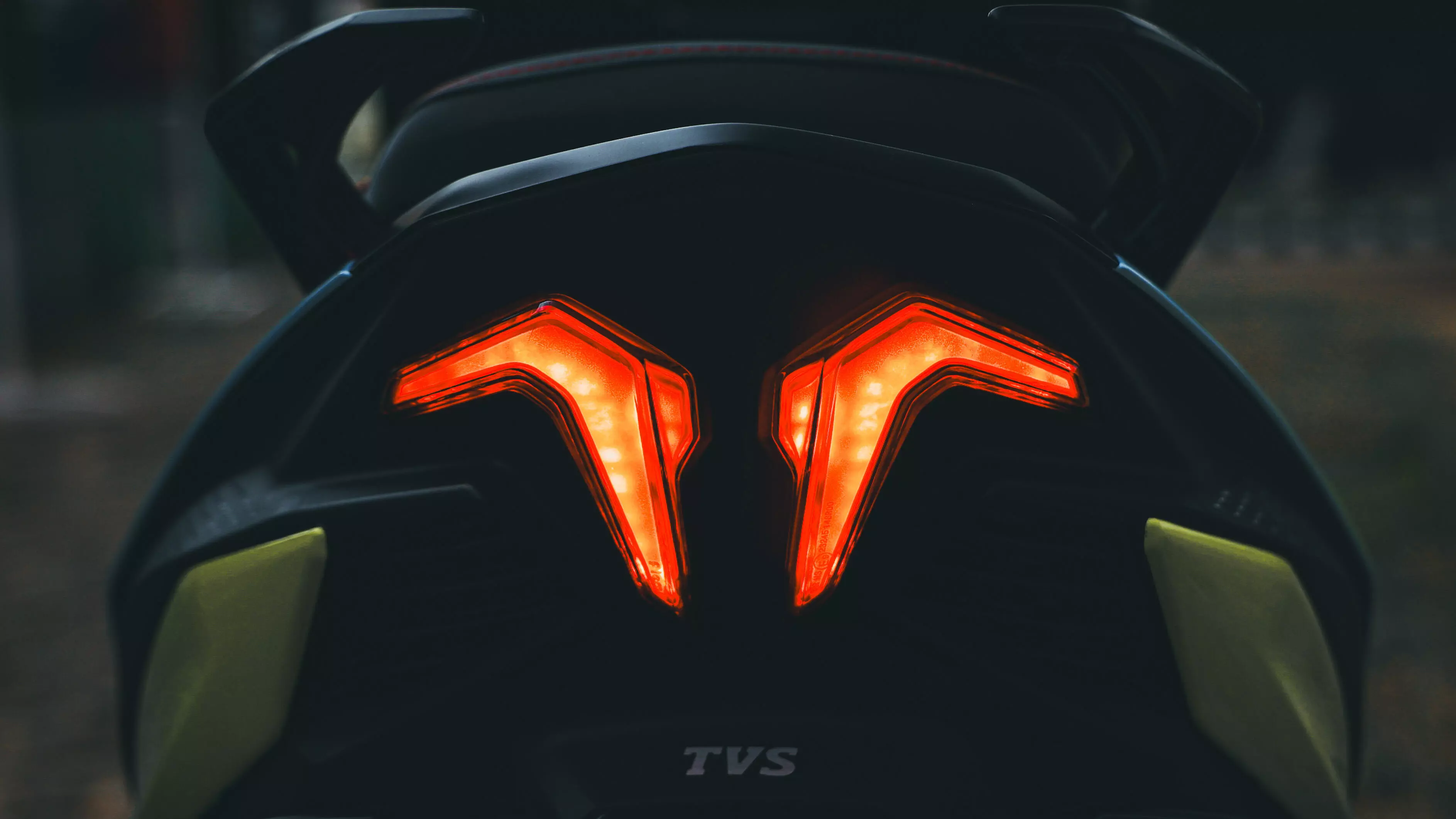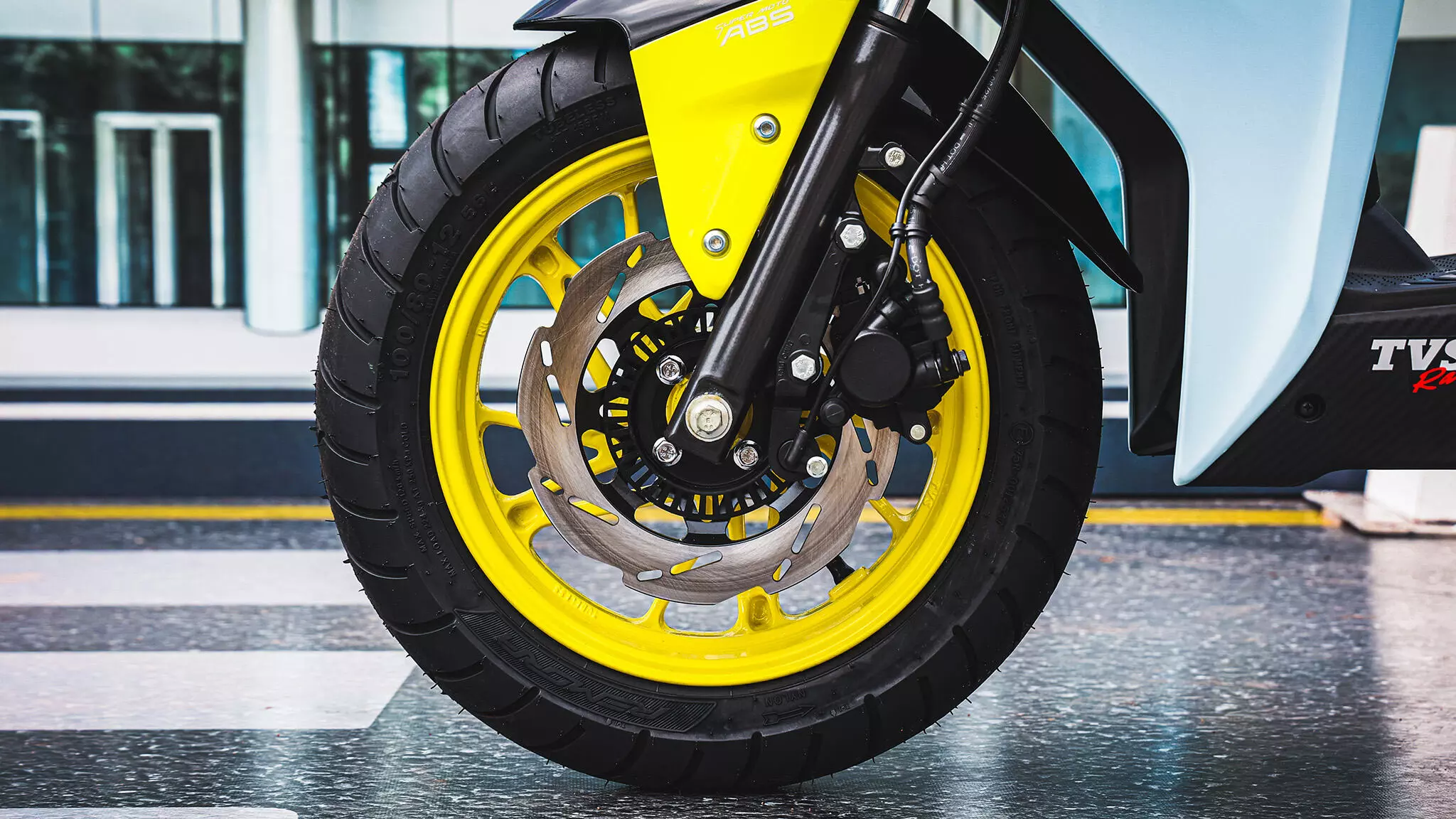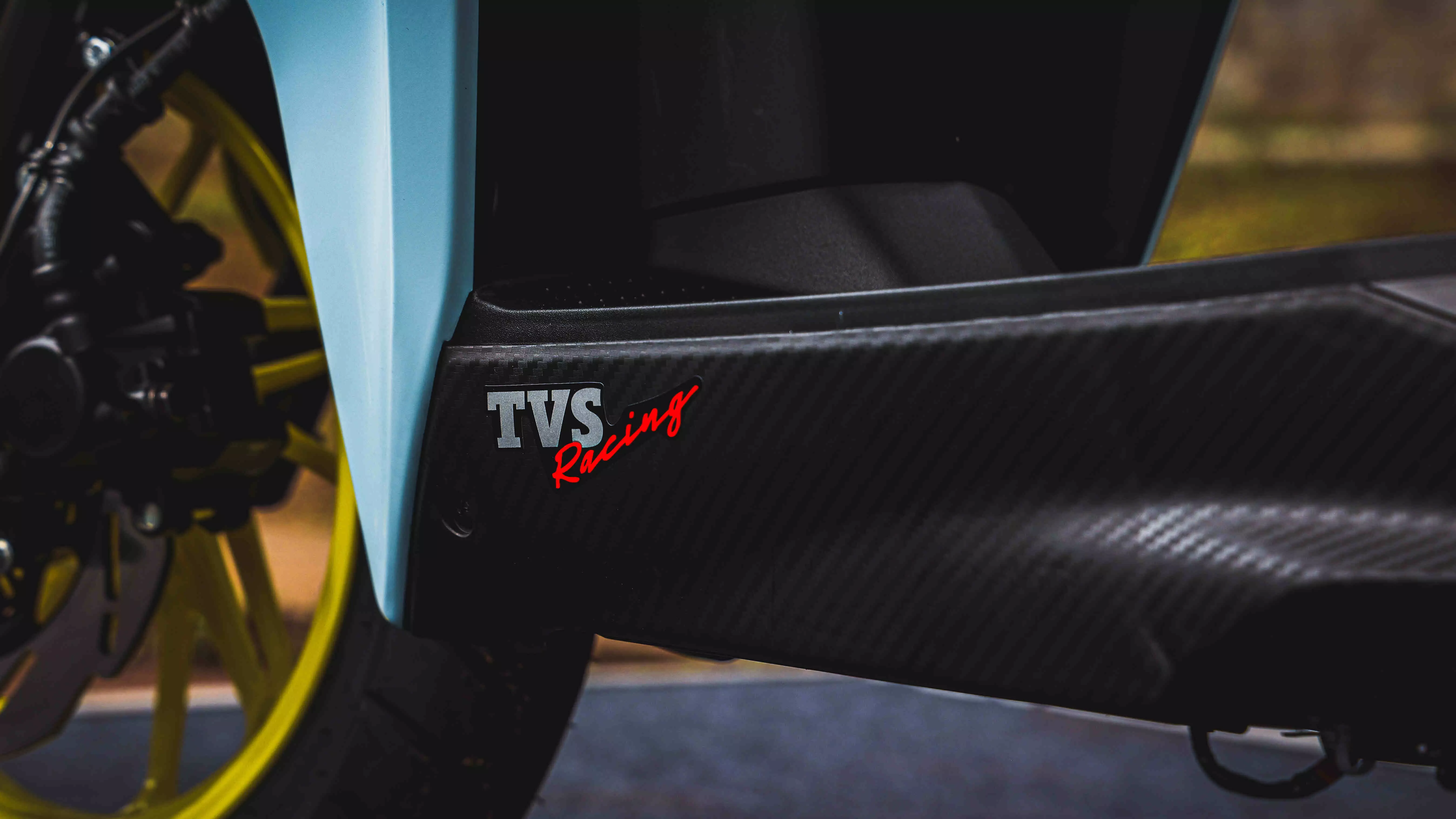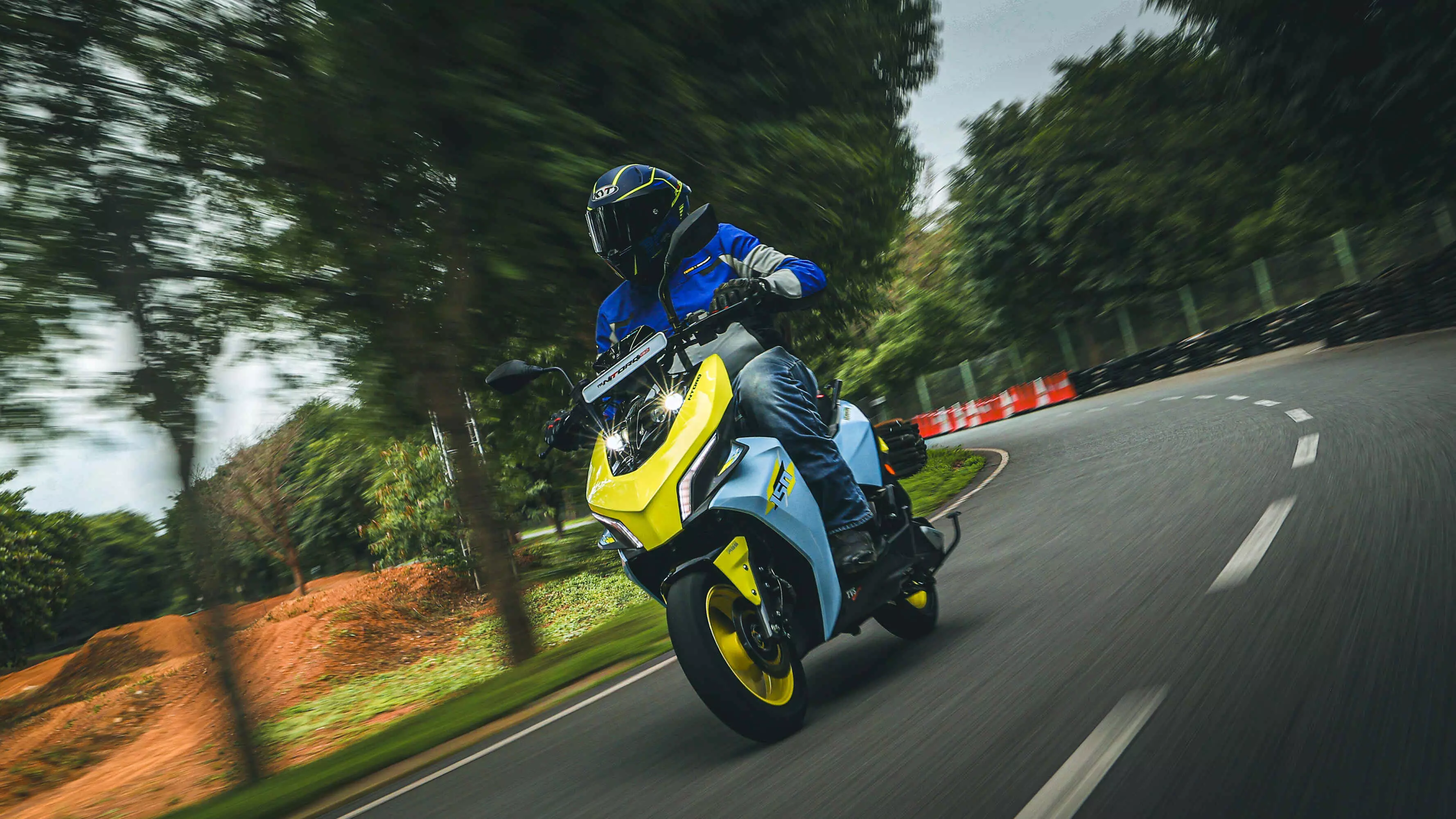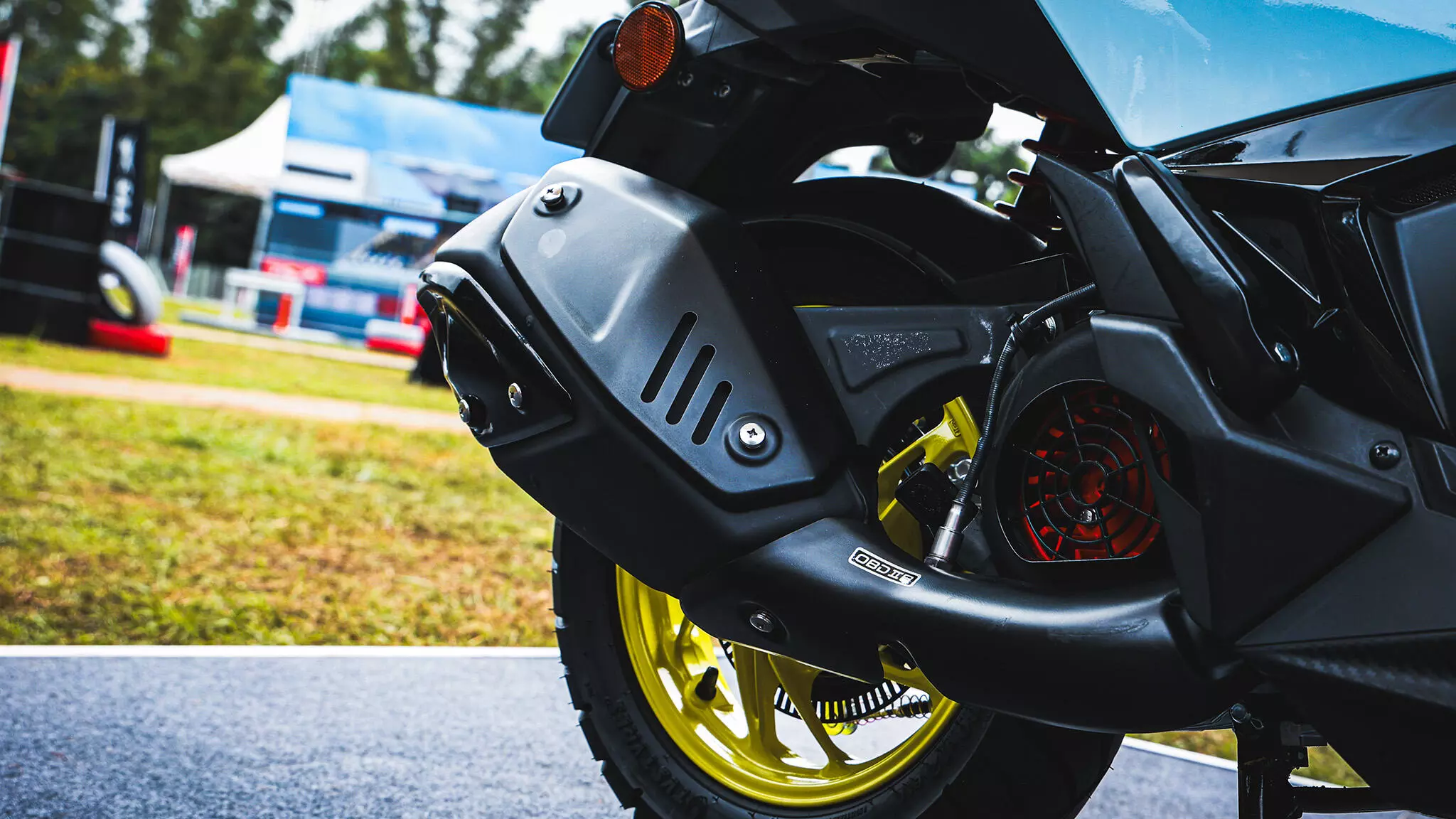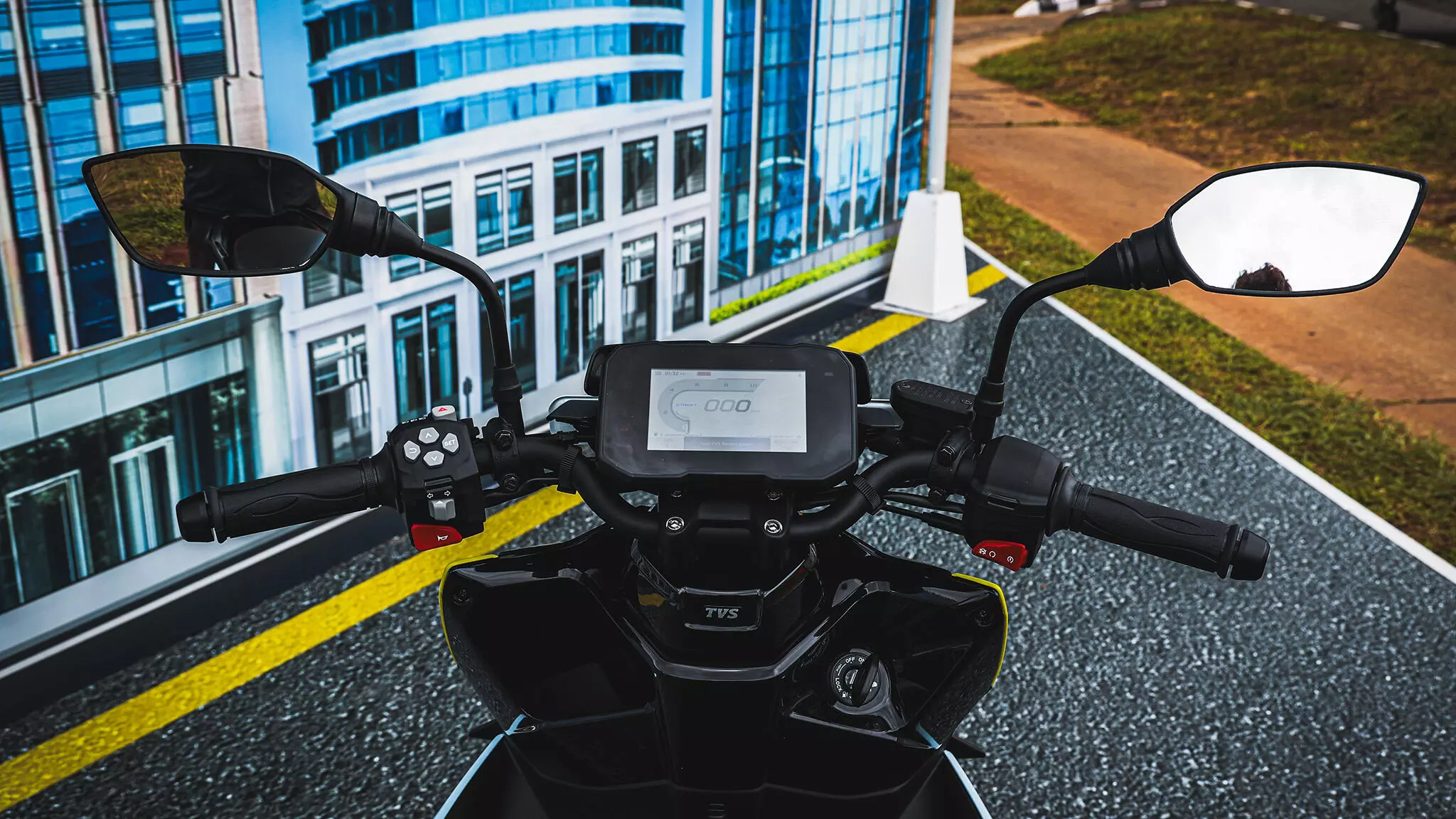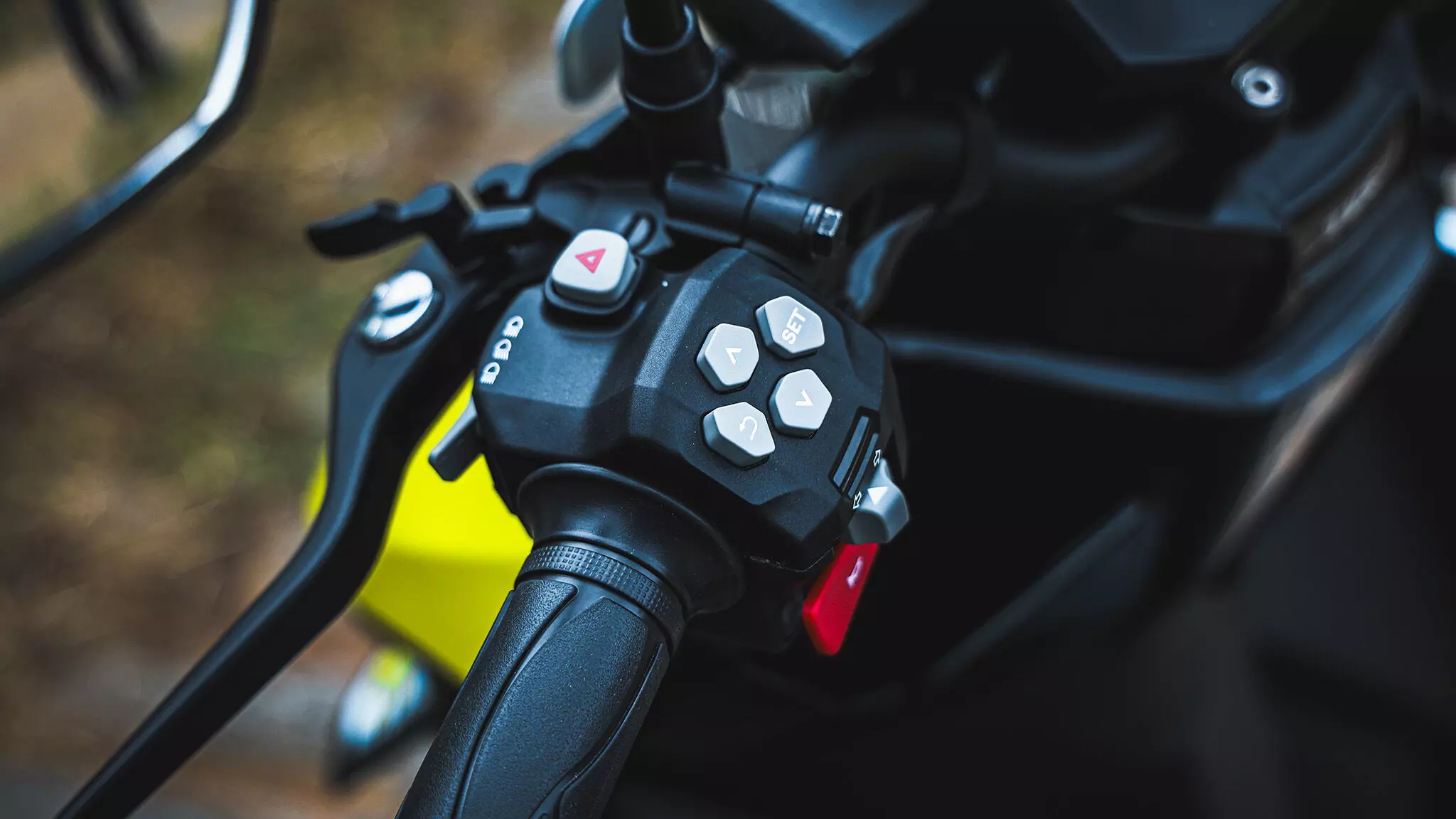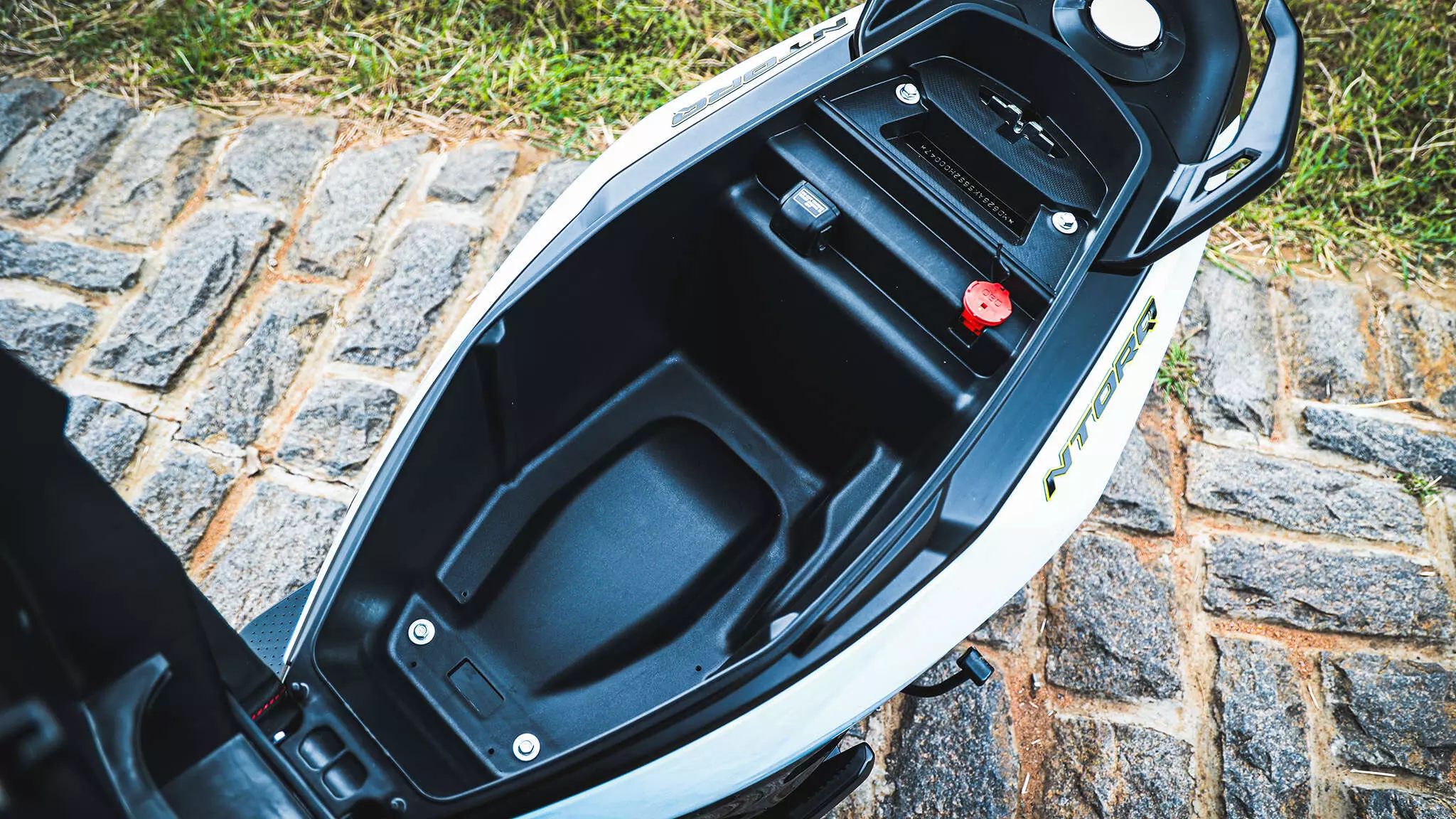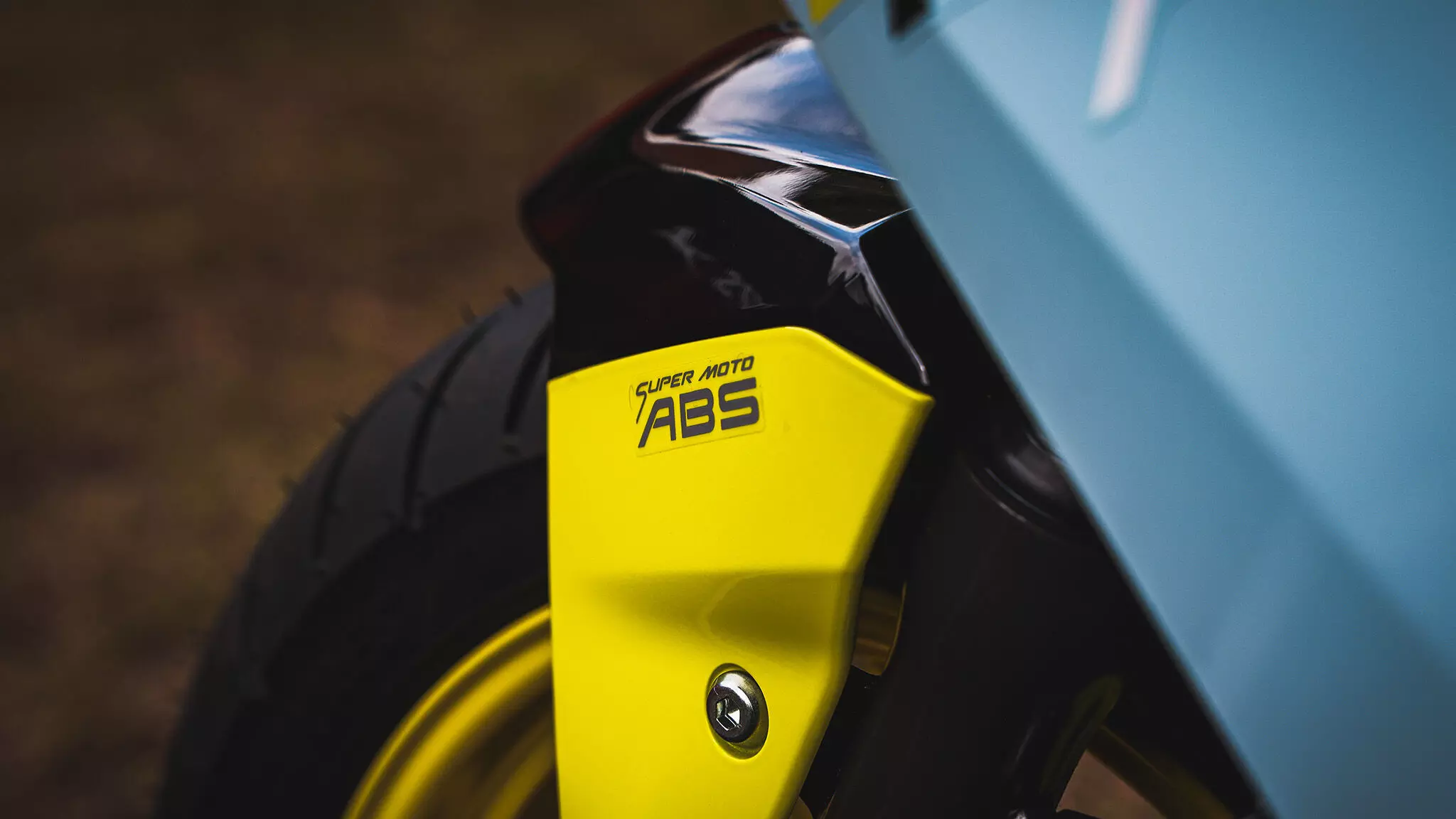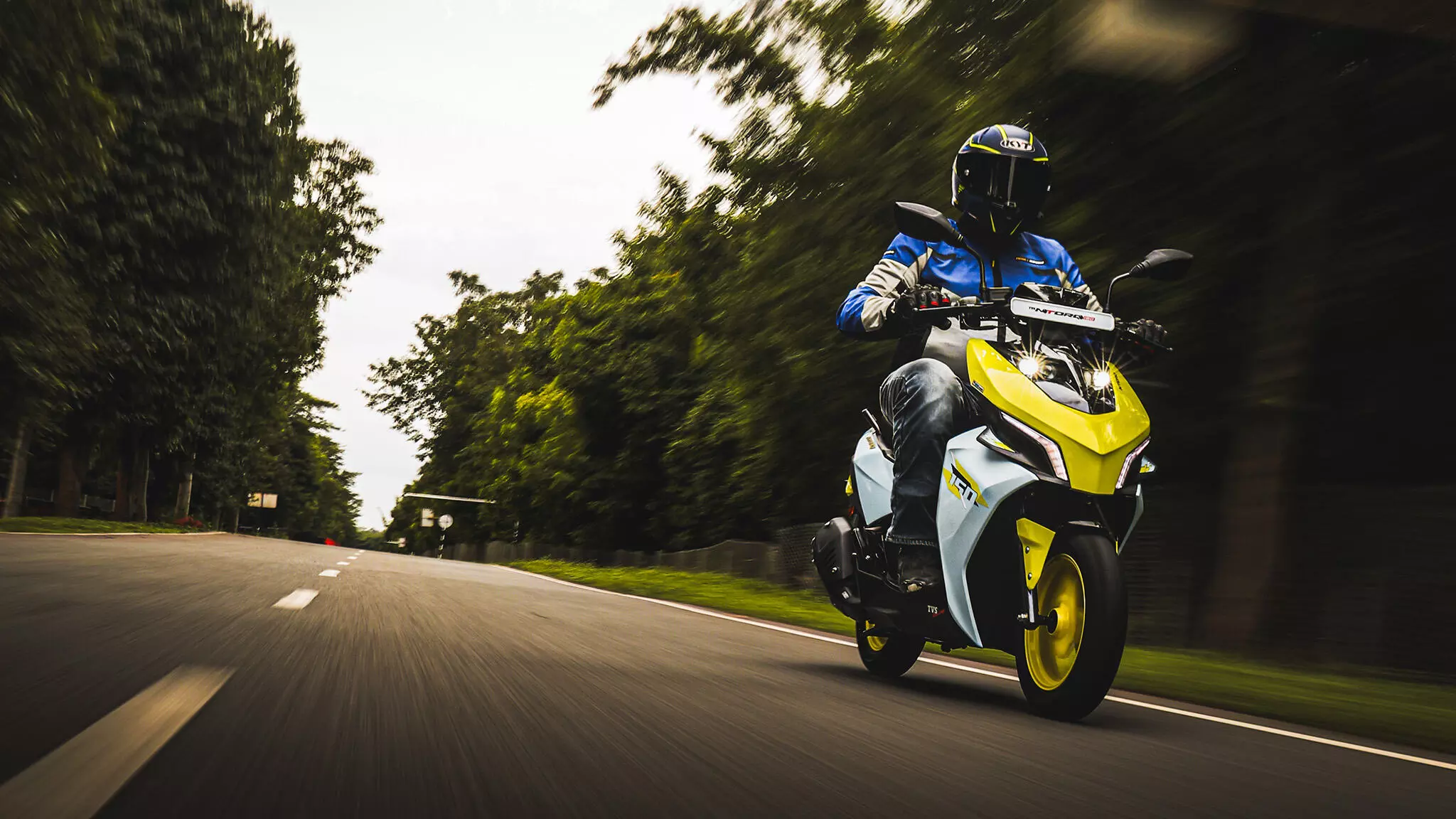
Bike Reviews
TVS Ntorq 150 first ride review: Is it ‘Hyper’ enough?
The TVS Ntorq 150 comes packed to the gills with tech and features and looks absolutely smashing. What’s it like to ride?
Performance and scooters aren’t exactly things you talk about in the same conversation. That is until TVS launched the Ntorq 125 eight years back. Other manufacturers had sporty scooters too, but the Ntorq 125 is what made the segment immensely popular. Now, TVS has embarked on a new chapter of the Ntorq journey with the introduction of the Ntorq 150. It is the largest scooter to come from the factories at Hosur to adorn the TVS badge. The Ntorq 150 promises to do everything that the 125 did but bigger and better. Does it manage that?
TVS Ntorq 150 design
The Ntorq 125 was quite the departure from the traditional scooters that TVS was making up until then. In fact, it was quite out there by industry standards, let alone TVS. It was a creative gamble that clearly paid off, owing to the fact that TVS quickly went on to lead the sporty scooter segment. With the 150, the design is even bolder and outlandish, yet another gamble that I’m certain will pay off. The Ntorq 150 looks bold, sharp and stylish. A proper evolution to the outgoing design. There’s clear inspiration from the Creon concept (now the TVS X in production form). The styling is sharp with the chiseled front, with winglets, and a new T motif for the DRLs. Then there are the quad-projector headlamps, a first for the segment. Above, you have a wider, exposed handlebar which is definitely my favourite design element on the scooter. On the handlebar is a colour TFT screen, the same unit from the RTR 310, which you control from the same switch cubes as the naked bike as well.
The front apron also houses a 2-litre storage space. The seat is now wider and more accommodating of a larger pillion. The rear section also gets redesigned with the taillight made up of two light strips that form a T. The indicators at the front and rear are now sleeker LED units as well. From the side the scooter retains the familiar Ntorq silhouette with the side made up of multiple panels with contrasting colours. The overall design of the Ntorq is absolutely killer and the only element I wish was different are the wheels. The 150 continues to use 12-inch wheels instead of 14 inchers which we all hoped for. But TVS tells us that there is a very good reason for that, which we will get into later. There are four colours to choose from – Turbo Blue, Nitro Green, Racing Red and Stealth Silver. Fit and finish levels are as expected from a TVS product.
TVS Ntorq 150 engine and performance
Powering the Ntorq 150 is a 150cc engine that has been derived from the unit that does duties on the 125. It has been bored out, which has resulted in the extra displacement, power and torque. The exact figures are 13bhp at 7000rpm and 13.5Nm at 5500rpm. The torque figures go up to 14.2Nm with the iGO hybrid assist that we first saw on the TVS Jupiter 110. TVS has also strengthened the transmission and given it a longer crankshaft to aid acceleration and improve refinement. Crank the engine and you’re greeted with a familiar baritone exhaust note. Get going and it is immediately apparent that the 150 is peppier than the 125. TVS claims a 0-60kmph time of 6.3 seconds which is 2 seconds faster than the claimed figure for the Ntorq 125 Race XP. While I didn’t get to test it with a VBOX, it certainly felt that much quicker.

The power delivery is potent and the refinement levels are high; the 150cc engine definitely feels peppier than the 125cc from before —Shot by Shubham Hadke for evo India
There is more grunt across the rev range and it accelerates rapidly till around 80kmph after which it’s a slower climb to top whack. TVS claims a top-speed of 104kmph and with my large frame on the short straight of the test track in Hosur, I managed to see 101kmph on the speedometer. The low end and mid-range is quite potent and you can open the throttle anywhere between 0-60kmph and the 150 surges ahead with vigour. Refinement levels are great too with barely any vibes creeping in even when you’re chasing triple digit speeds. The iGO assist is tuned to work everywhere in the rev range and when primed, it provides boost for 5 seconds. Maybe this is because I was almost always on the gas at the test track, the iGO assist didn’t seem as apparent as it did on the Jupiter 110. This might not be the case when riding in the city, so I’ll reserve my judgement on the hybrid assist function when we get the scooter for a proper road test. Apart from that, the Ntorq also gets a traction control system, something we didn’t really get to test on the pristine tarmac at TVS’s test track. While the 150 is faster, it doesn’t feel like a radical step up over the 125 to a point where it would rival something like a Yamaha Aerox 155. But it is certainly enjoyable nonetheless.
TVS Ntorq 150 chassis, ride and handling
Underpinning the Ntorq 150 is essentially the same chassis that does duties in the 125, but it has been strengthened to handle all the extra oomph that comes from the bigger engine. A telescopic fork at the front and a monoshock at the rear continue to suspend the frame that makes contact with the ground via 12-inch wheels. TVS tells us that 14-inch wheels were tested but they robbed the scooter of the agility and handling that makes the Ntorq special. I was skeptical at first but riding it confirmed TVS’s findings. The 150 retains all the traits that made the 125 such a gem of a scooter. Agile, flickable and stable. Three words that sum up the handling prowess of the Ntorq 150. The 150 feels planted at higher speeds and feels like a properly happy puppy when you show it a set of corners.

The use of 12-inch wheels instead of 14-inch ones felt like the right choice as it aids the agility and nimbleness around the bends — Shot by Shubham Hadke for evo India
The track at Hosur consists of two straights that are connected by one long sweeping, high-speed right turn and a kink that ends in a tiny left. I was taking the corner at 75kmph+ and the scooter was a hoot. The only complaint is that it feels a tad too soft and therefore bouncy. Admittedly this is a fat person problem. I would have liked if the monoshock at least had a preload adjustment function, but again I’m talking about riding the scooter at the limit. Something most people would never do. That being said, while I didn’t get to test it, I suspect that this slightly softer tune is what will make the Ntorq 150 perfectly at home on our pothole ridden roads, or road ridden potholes, if you will. The few undulations that the track presented, the scooter handled with grace, at both high speeds and low. Something I look forward to finding out during our proper road test. Ergonomics are familiar with a 770mm seat height. But you do have a wider handlebar now and that certainly aids the handling while also making you feel that you’re riding a larger scooter. Speaking of larger, the weight has gone up by 4kg to a 115kg kerb weight. But the extra power more than compensates for it. Braking performance remains solid with a disc brake at the front and a drum brake at the rear. TVS has also introduced a single-channel ABS system and that is certainly a win in my books.
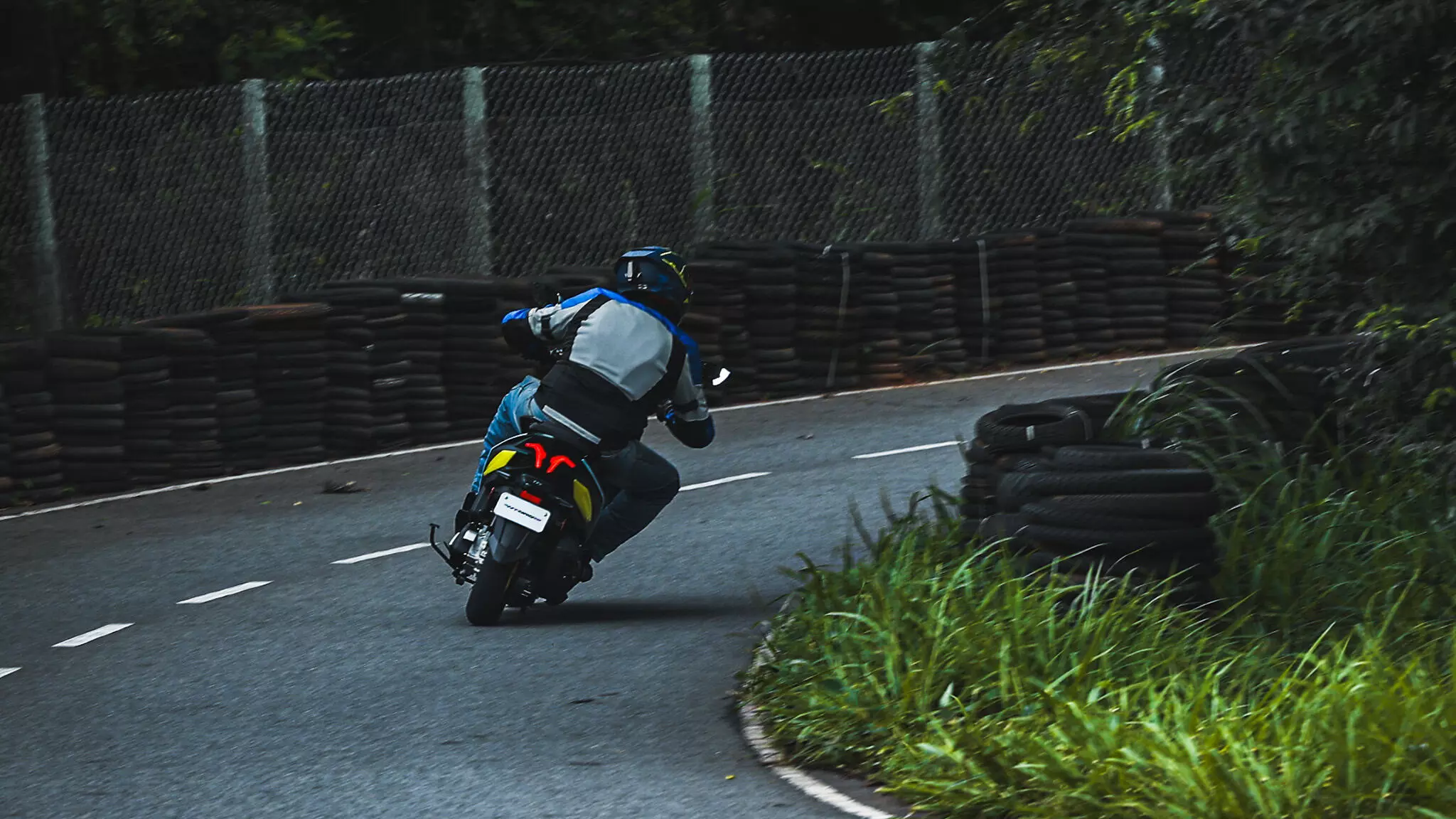
The slightly softer suspension will surely work wonders on our kind of roads; the wide handlebar is probably the best upgrade that inspires confidence — Shot by Shubham Hadke for evo India
TVS Ntorq 150 features
TVS is clearly winning at the features game with its last few products and the Ntorq 150 is no different. It gets a colour TFT screen with gaming inspired graphics and themes. You get all the info you would possibly need including a lap timer and telemetrics. As you would expect, it is connected up the wazoo with an inbuilt SIM card that enables all the connected features you can think of. This includes smartphone and smartwatch connectivity and Alexa HomeKit integration that allows you to get vital statistics of your scooter from the comfort of your home. Other features include adjustable brake levers, quad-LED projectors, ride modes, single-channel ABS and traction control.
TVS Ntorq 150 verdict
Prices for the Ntorq 150 start at ₹1.19 lakh for the base variant with the split-TFT screen (similar to the Ntorq 125 XT) and ₹1.29 lakh ex-showroom for the top variant that we rode. For that price, I feel the Ntorq 150 offers phenomenal value for money. TVS could have done a bit more by way of larger wheels or a more advanced engine to take the fight to the competition – Yamaha Aerox, Hero Xoom 160 and so on. But as it stands, it is still a good step up over the existing Ntorq 125. Should you get one? If you want a no nonsense scooter that is as practical as it is fun, and unlike the mundane commuter scooters that crowd our streets, the Ntorq 150 will not disappoint.


